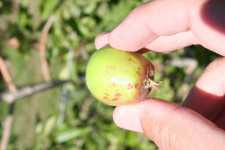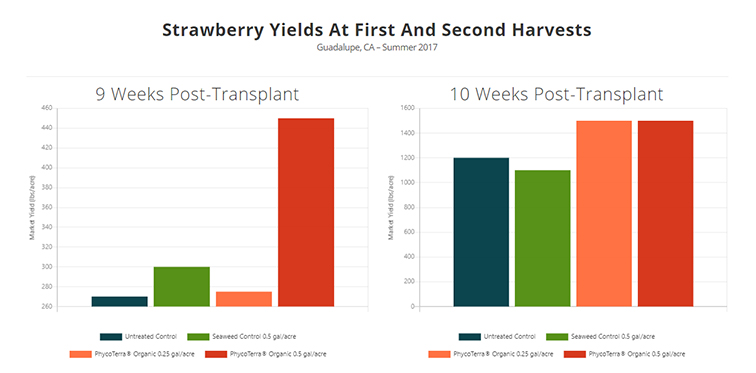Washington Growers Pounded By Hail

While most of the nation suffers through withering heat and a wicked drought, the Pacific Northwest has been hammered by hail and thunderstorms.
A series of storms, starting July 13, has produced high winds, severe thunderstorms, and extreme rainfall that caused extensive damage to homes, businesses, public buildings, and infrastructure.
Washington Governor Chris Gregoire proclaimed a state of emergency last week for 16 counties after heavy storms caused significant power outages, fuel shortages, and road closures, which are threatening at-risk populations, including those with medical needs. The counties affected by the proclamation include Adams, Benton, Chelan, Douglas, Ferry, Franklin, Garfield, Grant, Jefferson, Kitsap, Kittitas, Klickitat, Okanogan, Pend Oreille, Walla Walla, and Yakima counties.
“The storm damage and its effects continue to impact the life and health of our citizens, as well as the property and transportation infrastructure of Washington State, all of which affect life, health, property, or the public peace, and constitute a public emergency demanding immediate action,” Gregoire wrote in the proclamation.
The proclamation directs state agencies “to do everything reasonably possible to assist affected political subdivisions in an effort to respond to and recover from the event.” Additionally, the Washington State Military Department, Emergency Management Division, is instructed to coordinate all incident-related assistance to the affected areas.
The USDA reported that Secretary Tom Vilsack is using his authority to flex programs in order to provide relief for those affected. In counties not designated disaster areas, individuals who have suffered at least a 30% loss in crop production or a physical loss to livestock, livestock products, real estate, or chattel property may be eligible for emergency loans.
“This provision may be especially applicable due to this season’s thunderstorms, which caused isolated damage throughout the state,” said Farm Service Agency State Executive Director Judy Olson.
As for tree fruit growers, Washington State University (WSU) Extension agent Tim Smith said the industry has been hit hard. “We were sitting on a great crop of apples,” he said. “We think there are still a lot of good apples out there, but we won’t know the full extent of the damage for at least a couple weeks.”
Smith said that field men would take at least a week to assess damage in their growers’ orchards. That data would then be collected by packing houses, which would then present their cumulative findings to the industry.
Smith emphasized the need for producers to be on the lookout for fire blight in blocks known to be already infected with the disease. “If there already was fire blight in a block, the wounding caused by the hail and the wet conditions generally are conducive to the spread of fire blight,” he said.
Smith, an internationally recognized expert on fire blight and its management who serves on American/Western Fruit Grower magazine’s editorial advisory board, said that producers should be on the lookout for symptoms of fire blight 10 to 14 days after the latest hail event. “Growers can save trees by cutting out infected branches,” he said.
The weather pattern was extraordinarily unusual, said Nic Loyd, a WSU AgWeatherNet meteorologist, which resulted in a convergence of factors resulting in the damaging weather. “These factors include warm air, moisture – the fuel for the storms – an unstable low-pressure system, wind shear, and a dynamic cold frontal passage that acted as the trigger,” he said. “The resultant weather included severe thunderstorms that featured strong winds, heavy rain and flash flooding, lightning, and large hail in some places.”
Because the convection cells that form thunderstorm clouds are relatively small, not every location received notable weather. For example, the AgWeatherNet station at Sunnyside recorded nearly three-quarters of an inch of rain in a mere 15 minutes one recent day, while nearby locations received no rainfall at all. Loyd explained that storms are more likely to form over mountains or hills, since the sun-warmed ground on a hilltop is surrounded by cooler air and is thus more unstable than the air at the valley floor.
The size of the hail that damaged crops was due in part to the strong convection cells. A convection cell forms when there is a strong gradient, or difference, between hot and cold fluids, as the Earth’s atmosphere behaves much like a fluid. “As warm, moist air rapidly rises in an unstable environment, condensation occurs and creates large thunderstorm clouds. If the updrafts in the storm are strong enough, large hail can form in the cold air that is present high in the atmosphere,” said Loyd. “As gravity pulls the hail downward, updrafts force the hail upward yet again and allow greater amounts of water to freeze to the hailstone before it ultimately falls to earth.”
Olson reminded farmers to report weather-related damage to the USDA’s Farm Service Agency. “USDA uses damage reports to determine a need for disaster declarations,” she said. “Damage reports are not limited to crops. They also include farm structures, farmland and livestock.” She encouraged growers to contact FSA county offices to report damages and inquire about assistance from USDA.










